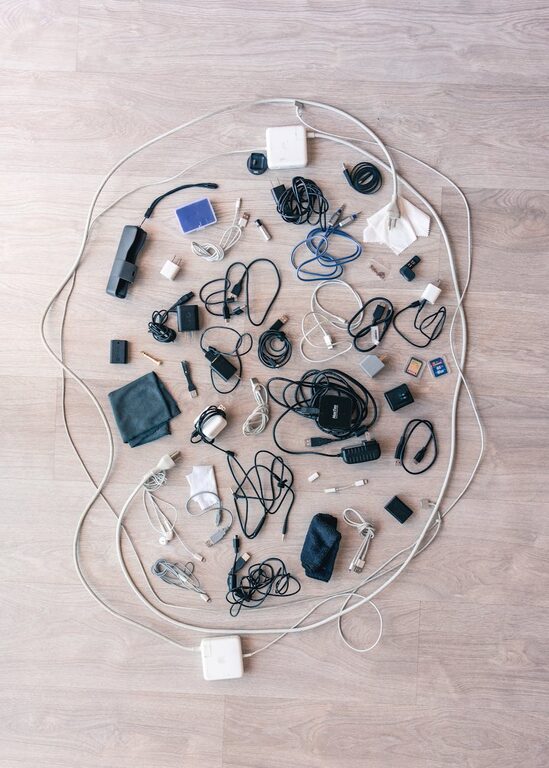
Keeping cables and chargers neatly organized can transform your workspace or living area from cluttered chaos to a calm, efficient environment. Whether you’re dealing with phone chargers, laptop cords, or various electronic cables, having a system in place saves time, reduces frustration, and protects your devices.
In this guide, we’ll explore practical steps and creative ideas to organize cables and chargers effectively.
Why Organize Cables and Chargers?
Before diving into solutions, it’s worth understanding why cable organization matters:
– Reduces clutter: Tangled cords create visual mess and make it hard to find what you need.
– Prevents damage: Knots and twists can damage cables and connectors over time.
– Improves safety: Loose cables can cause trips or become fire hazards.
– Enhances efficiency: Organized cables mean less time untangling and more time using your devices.
Assess and Sort Your Cables
Step 1: Gather Everything in One Place
Start by collecting all cables and chargers from drawers, bags, and around your home or office. Seeing all your cables at once helps you understand exactly what you have.
Step 2: Sort by Type and Use
Divide cables into categories, such as:
– Phone chargers
– Laptop or tablet chargers
– Audio cables and headphones
– HDMI, USB, and other data cables
– Power strips and extension cords
Sort further by frequency of use—daily, occasional, or rarely used.
Step 3: Decide What to Keep or Discard
Old, broken, or duplicate cables may be cluttering your space. Recycle or properly dispose of those you no longer need.
Choose the Right Storage Solutions
Different storage options fit different needs and spaces.
Cable Organizers and Clips
– Cable clips: These attach to desks or walls and hold individual cables in place for easy access.
– Cable sleeves: Tubes or wraps that bundle multiple cables together protect them and keep them tidy.
– Velcro straps or twist ties: Reusable ties help keep cables coiled without tangling.
Boxes, Drawers, and Containers
– Cable boxes: Special boxes hide power strips and manage cords to reduce visible clutter.
– Drawer organizers: Using small compartments or dividers lets you store chargers and cables neatly.
– Storage bins: Label bins to store rarely used cables clearly.
DIY Solutions
– Binder clips: Attach cables to desk edges or walls using binder clips as holders.
– Toilet paper rolls or cable wraps: Repurpose empty rolls to organize smaller cables.
– Hooks or pegboards: Mount near workspaces for hanging cables.
Effective Cable Management Tips
Label Your Cables
Use small labels or colored tape to identify cables easily. Labeling reduces confusion and speeds up finding the right cord.
Coil Cables Properly
When storing, coil cables in loose loops (about the diameter of your hand) to prevent damage. Avoid tight bends that stress wires.
Use Charging Stations
Set up a dedicated charging station with enough ports and organizers to prevent devices and cables from spreading everywhere.
Hide Cables Strategically
Run cables behind furniture or along walls using adhesive cable channels or raceways. This keeps floors clear and reduces tripping hazards.
Creating a Routine
Maintaining cable organization requires regular effort.
– Weekly check: Spend a few minutes ensuring cables haven’t tangled or accumulated mess.
– Put away after use: Make it a habit to coil and store cables immediately after unplugging.
– Review periodically: Reassess your cable collection to discard unused ones.
Bonus: Organizing on the Go
For travelers, a compact cable organizer or pouch helps keep chargers and cords tidy. Look for options with multiple compartments and elastic loops to secure each item.
Final Thoughts
Organizing cables and chargers neatly is simpler than it seems with a bit of planning and the right tools. Not only will your space look cleaner, but you’ll also enjoy easier access and longer-lasting cables. Start small, stay consistent, and enjoy a clutter-free tech setup!
